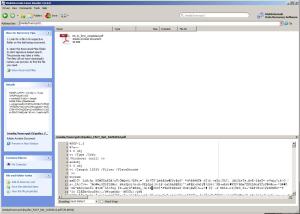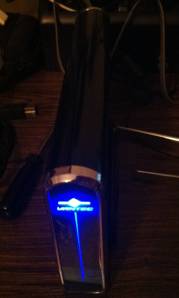As this blog is an ongoing venture, occasionally I will want to update previous entries or projects. New information is gathered, projects evolve and, in general, things change. Also, I’ve found that updates don’t work so well on old posts because few people bookmark them and then come back later. To combat this, every once in a while I will be giving updates in rapid fire about previous entries. Those posts will be automatically updated via “pingback” in the comments section, so if you actually do bookmark them, then you’ll get notified that way.
Without further ado:
Bitcoins

On April 11, 2013, Bitcoin Exchange Halted Trades in order to bring down the price of the coins. They also released a statement denying the bubble and assuring everyone that it was a solid currency. Whether it is or not remains to be seen as it has had its share of detractors and the largest U.S. exchange shut down following the big hype. As stated in my previous post, no matter how it turns out, it’s a fascinating convergence of technology and economics, much in line with the computerized traders on the stock market today. While I’m still extremely skeptical, I’m secretly rooting for an all-digital currency.
Mobile Digital Vaults

My last project involved taking an old 500GB SATA drive, using TrueCrypt and a snazzy drive enclosure to turn it into a mobile digital vault. This was largely successful, although I could not get Windows to format a large enough partition for some reason. This led to me formatting the virtual drive into EXT4, which meant that I could not read it on Windows. I don’t use Windows that much, so that was not a big deal, however I wanted to see if I could find a method that would let me do so.

I mentioned that I used a piece of software called EXT2READ which I found out later did not work. When I tested it prior to writing the article, I found that I was able to read the drive, though some days after when I tried to copy a .DOCX file from an EXT3 partition to my NTFS Windows drive, the file was corrupted and unreadable. So, I tried another piece of software by DiskInternals to read EXT2/3/4 drives and it worked flawlessly, seeing the newly mounted TrueCrypt drive and letting me access it.
Also, I got another drive enclosure, the Nexstar3 by Vantec to house another 250GB SATA drive. The only major difference between the two is that the NexStar3 does not have a fan built in thus making it significantly smaller. It also requires two different sized screwdrivers to get your drive in, which I thought was odd, but otherwise it seems to be a solid piece of equipment. This drive is a little more “mobile” than the other so I’ve moved all of my encrypted drives that I want to take with me over to this one making the Rosewill enclosure largely stationary on my desktop.
Google Fiber

AT&T is feeling threatened by Google Fiber and has launched a counter-offensive aimed at bringing fiber to mainstream consumers in Austin. Some have argued that this is just posturing, but that they even bothered to acknowledge Google’s plans means that they’re taking the move towards a fiber infrastructure seriously to some degree. On the heals of this announcement came Time Warner Cable’s decision to wire Austin for WiFi. Austin Texas is going to be one of the most internet-connected cities in the U.S. at this rate.
Again, as I said in the last post, there is no bad news.
Future Projects
I have several new projects lined up for the next month, a few which are already underway. First of all, I need to take a 1TB (terabyte) hard drive and resurrect some files that got deleted from it. I will probably be using Deft Linux for this, which should be interesting. I’ve only “carved and sifted” once before.
Also, I got my Raspberry Pi up and going, which was interesting in and of itself, but I’m thinking that I’ll drop Wheezy and move toward XBMC. I had hoped to stream video from my Windows shared drive and onto my TV. We’ll see how that goes.
Lastly, I want to do a longer Wednesday post about Security on the Internet. The utilities I use to keep myself secure might be interesting to others out there. The use of VPNs, two step authentication and software to obscure passwords will be some of the pieces I’ll touch upon.
-CJ Julius
You must be logged in to post a comment.